02 | Line

Can you tell which end of this line is closer to you?

This reveals a problem.
We want to draw 3D forms using lines which are as flat as the paper they sit on.
Our first step into the 3D world will be a ribbon.
The ribbon is made entirely out of lines, but some of those lines are closer than others. It adds depth - which makes it a primitive form.
Drawing a ribbon
- Draw a squiggly. Imagine it starting in the distance and going towards us.
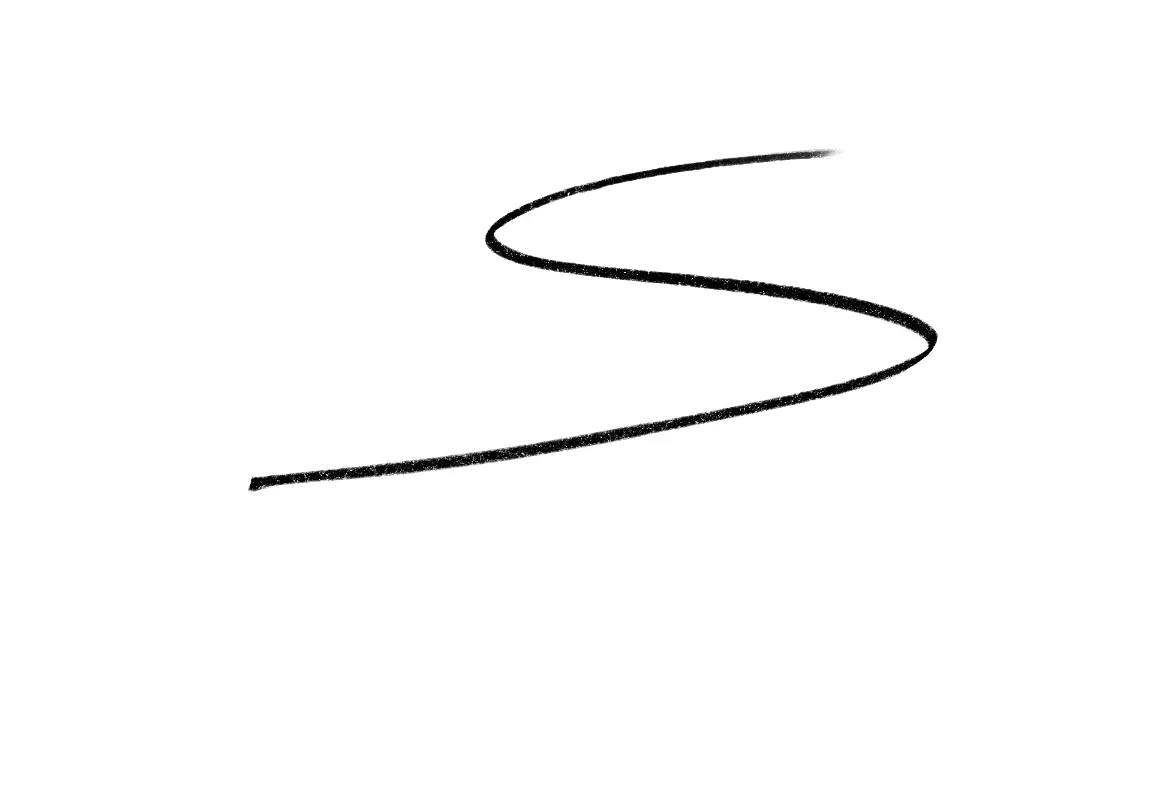
- When it changes direction, extend a line at a right angle.
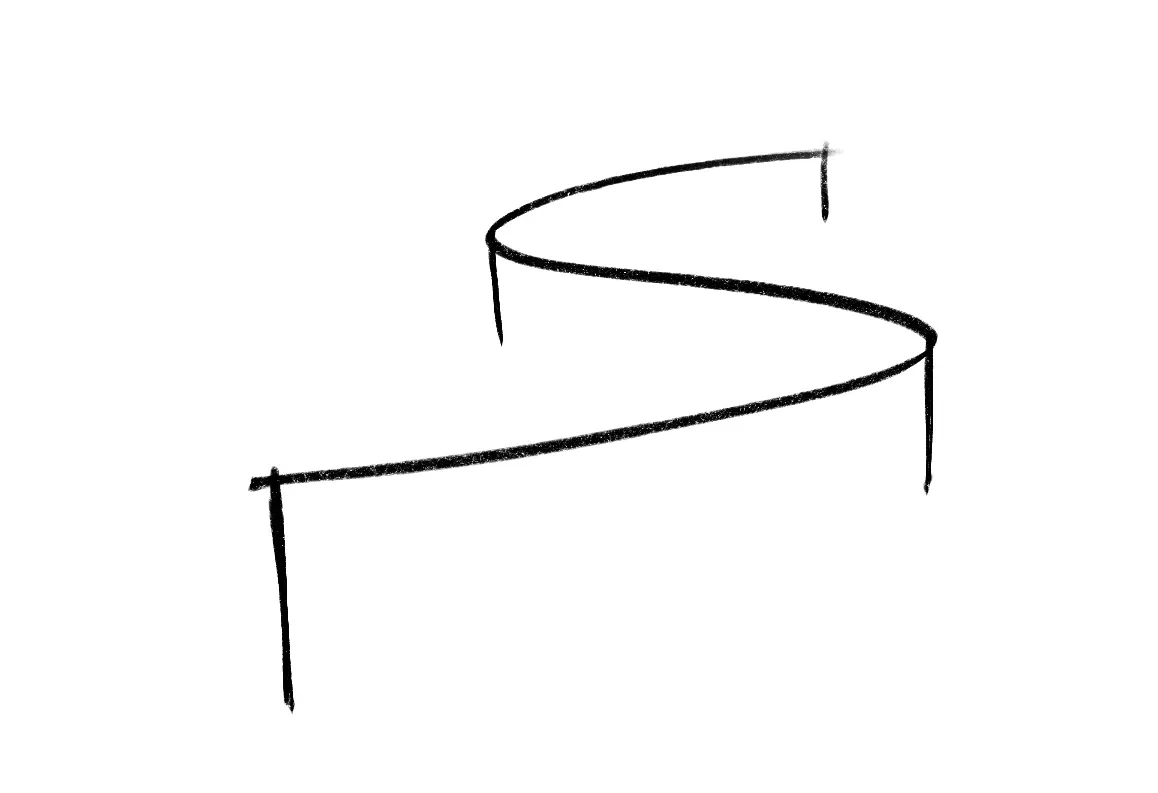
- Connect the ends with a line that mirrors your squiggly line.
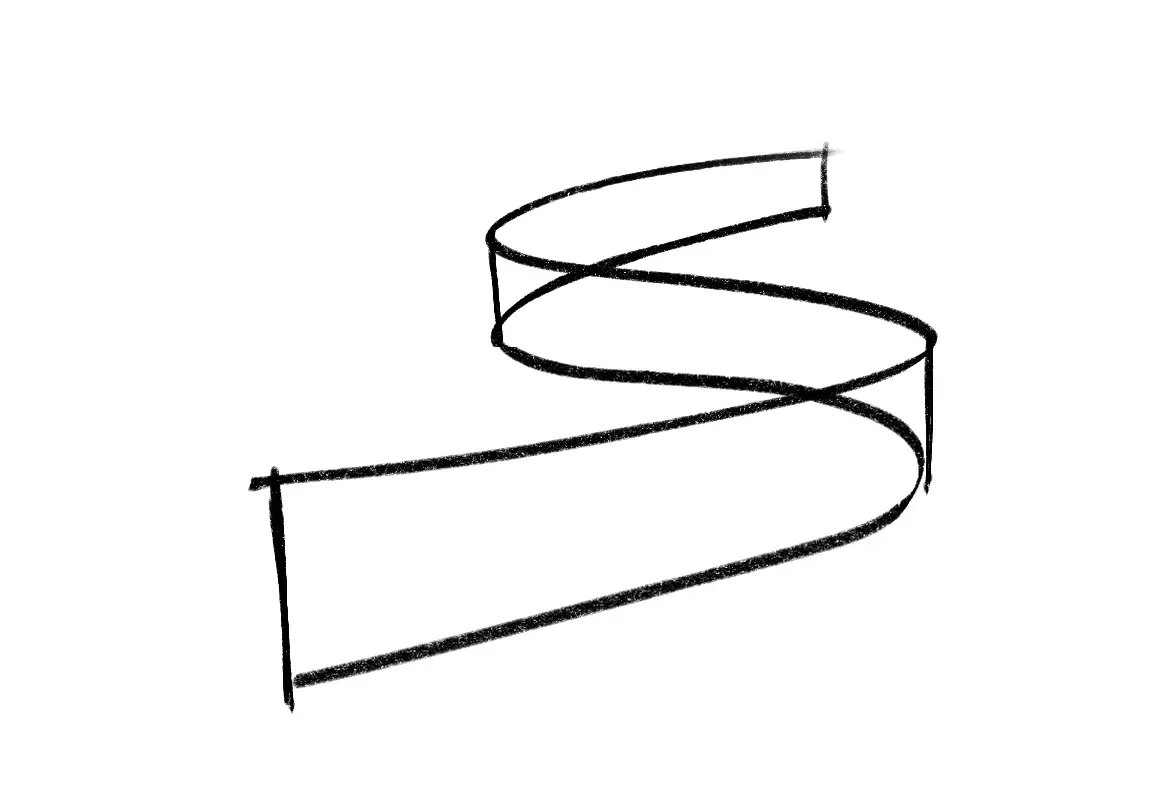
Solving overlaps
See how it becomes unclear where lines overlap?
To tell the viewer clearly what's in front of what, draw the 'top' line more boldly than the 'back' line. For even more clarity, you can hatch one side of the ribbon.
- Hatch along the form, not against it
- Place your lines closer the more a surface turns.
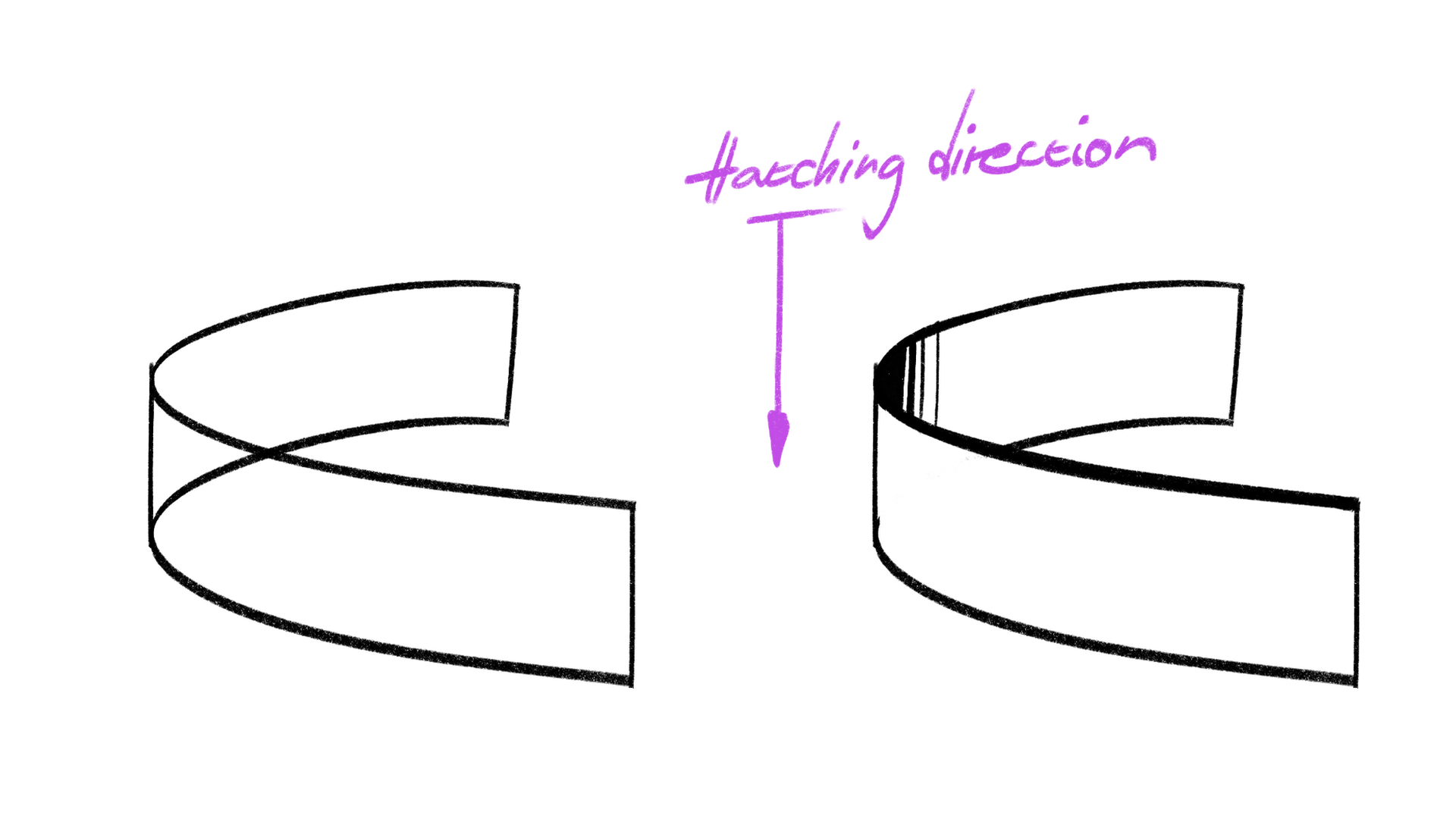
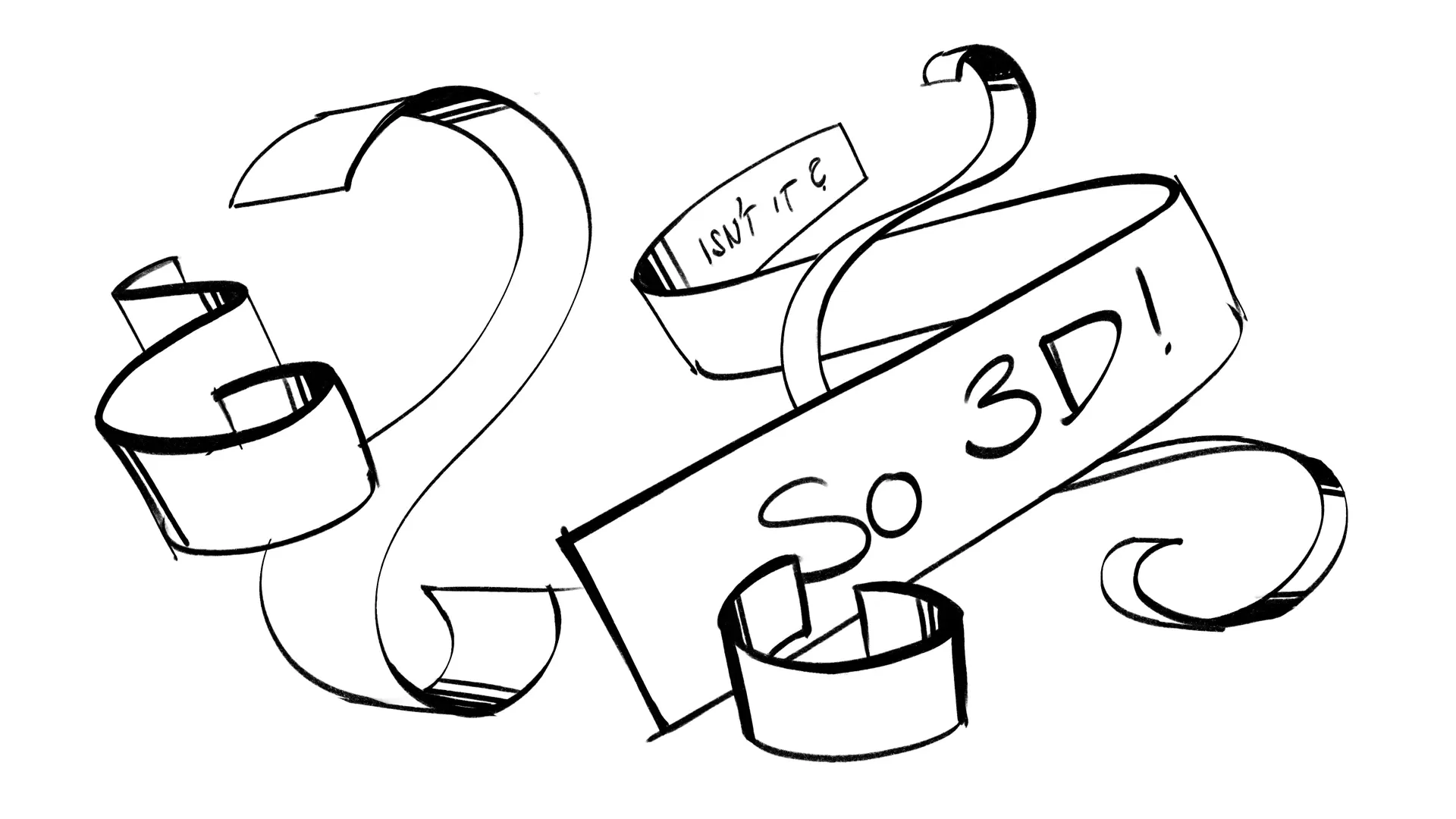
The illusion
Whenever you draw, imagine the tip of your pen going not just left and right, but also forward and back.
With practice, the flat surface under your hand will start to feel like a window, something you can reach into and touch the objects hiding in the whiteness of your paper.
Capturing 3D objects on a 2D surface is an illusion the audience wants to believe.
Making the illusion convincing is our job as artists.
...Can you tell which end is closer now? 🙃
Summary
- Drawing 3D objects is an illusion.
- We use overlaps to make the illusion convincing.
- What you think about while drawing (eg. depth) affects the outcome.
Assignment
- Fill a page with different kinds of ribbons to explore 'the space behind your paper'.
- Relax your shoulder and draw big, smooth strokes using your whole forearm.
- Imagine your pen moving not on a 2D paper, but in 3D space.
- Share your work in the Discord study group!
